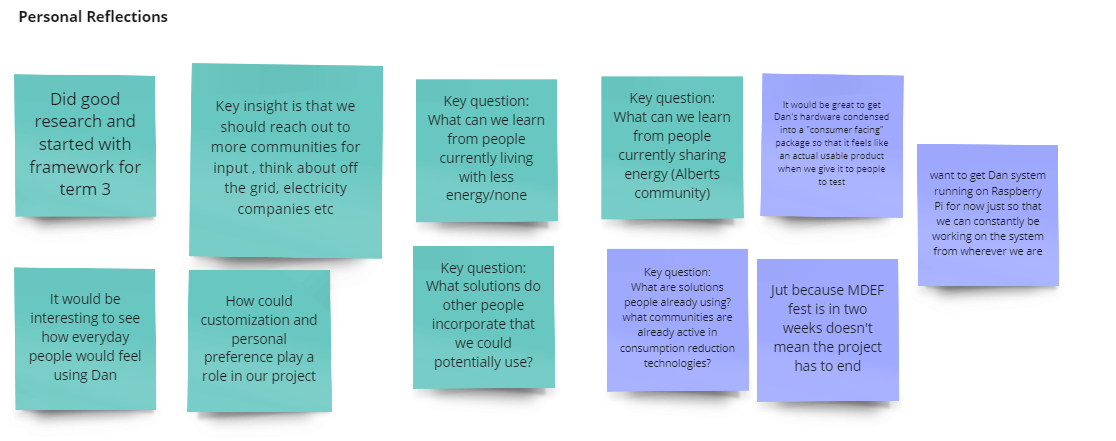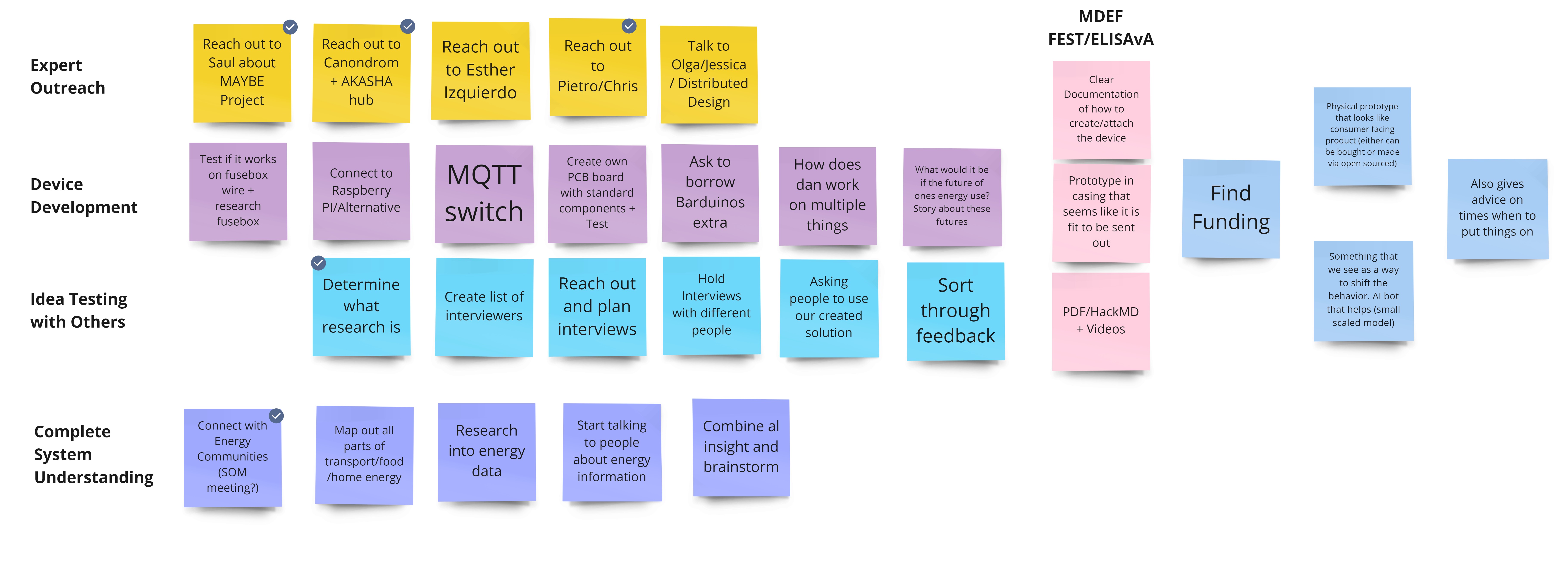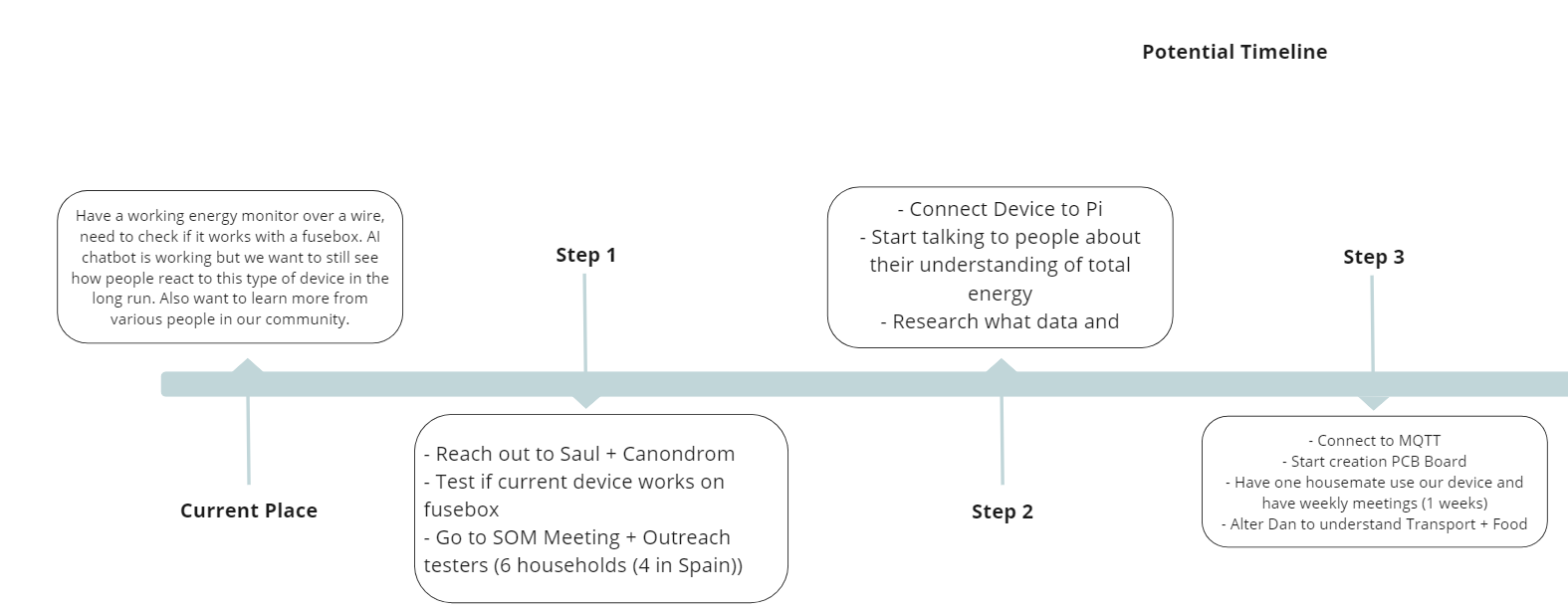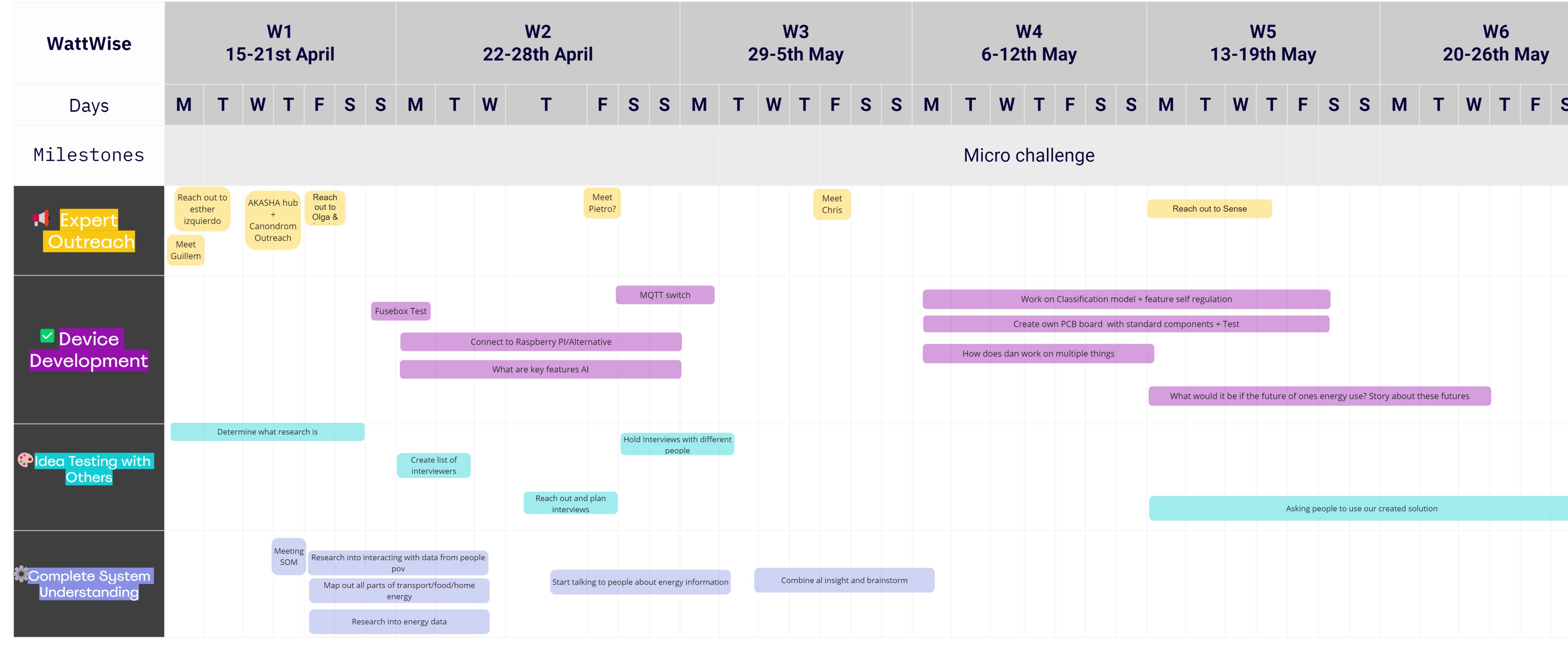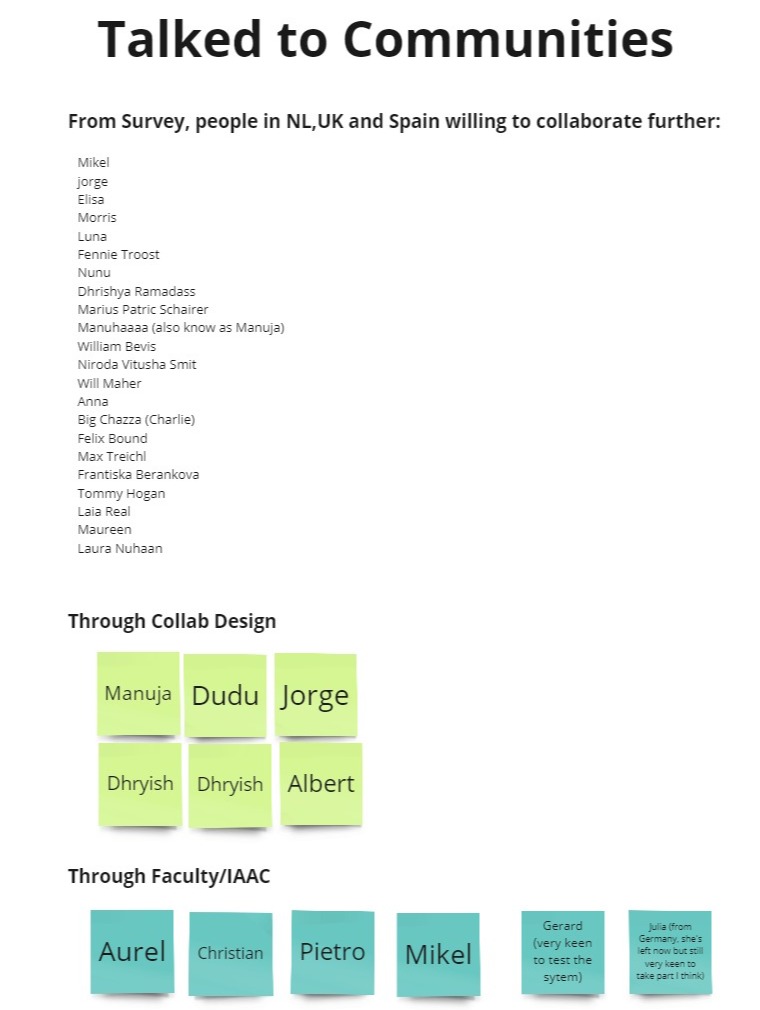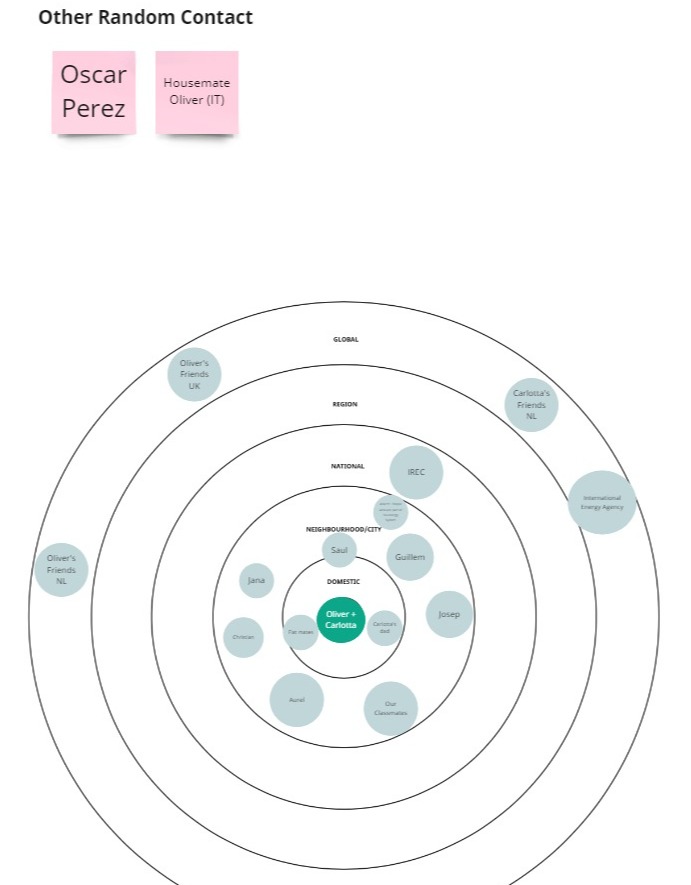Design Studio 3.1 ~ Situating the Project and Community Outreach¶
Too Long Didn’t Read
In our first session of the Design Studio model for Term 3, Carlotta and I reviewed our project’s progress and planned its future direction. So far, we’ve developed a working prototype of our energy monitor and formed a budding community around our project’s goals. This term, our focus is on deepening community engagement through co-design methods and enhancing our prototype, including integrating a more sophisticated PCB to streamline its design. We’ve laid out four key development areas: Expert Outreach, Device Development, Testing and Designing with Others, and Complete System Understanding. We’ve also planned a short pilot study to track and analyze participants’ energy consumption, aiming to foster behavioral change through greater visibility of energy use. Our approach is flexible, ready to adapt as we learn more from our community and mentors. I’m eager to see how our project evolves and its impact post-MDEF.
This first session of the Design studio model for Term 3 was a review of project research so far and a chance to sit down and discuss where we wanted the project to head next, and plan for how to get there. Carlotta and I took the time to chat about and plan the next steps we needed to take to move our project forward into this final term of MDEF.
What we’d achieved so far…¶
We sat down together to collect our our thoughts on everything we’d achieved so far in the project, identifying what went well in Term 2 and what we thought could be improved this term. We’ managed to develop a working prototype of our energy monitor, a functioning version of Dan (our AI companion that would be doing all of the heavy lifting and communicating of total energy consumption) and we’d started to form a little community around what our project was trying to achieve.
What we want to achieve now…¶
What we really want to achieve this term is a much deeper engagement with our community so far, strengthening it further by including them in a series of research stages that help us with developing the tools we are working on even further. By engaging in a series of co-design methods we think we’d be able to really create a sense of co-ownership over the project as well as we encourage our community members to not just be research participants but active stakeholders in the outcome of the project as well.
At the same time as community building, we really wanted to finish a second prototype of the energy monitor we’d developed, including an integrated PCB prototype that would allow us to create a series of prototypes that look far more finished and user ready than what currently appears to be a birds nest of tangled wires on breadboard. Dan the energy AI is also on the development board for this term, as we want to make sure that we can have a much more accurate and robust model that people can interact with, further testing and pushing its capabilities to see how people interact with it. ultimately Dan is the agent that should (hopefully) create the positive behavioural change we want to see in the people using our tools, so that’s got to be pretty robust (which means I fear there is going to be a lot of programming here to get to this level, but a welcome challenge nonetheless).
To help us plan this out we set out 4 key areas of development we needed to go down:
- Expert Outreach
- Device Development
- Testing and Designing with Others
- Complete System Understanding
It was in these 4 areas that we created plans and laid out the goals we wanted to achieve for the term as we head towards the final showcase at MDEF fest. We also understood that we might not be able to complete all of them by the time we get to festival but seeing as the festival is kind of like another dialogues it doesn’t mean the project ends there, so we just want to see how much we can get done by the time that comes around!
Planning and Plotting¶
These tasks we placed into a timeline, to help us visualise where some of the term milestones should go so that we could plot the steps we’d have to take to reach each of those goals. We needed some expert advice and knowledge, and then to recruit some participants for a week long micro study we had in mind to understand how people would react to using such a tool.
Growing our Community¶
We headed back to our (slowly) growing community board, to review what we’d done so far and where we wanted to head next, we noticed we’d managed to interact with some communities outside the direct IAAC environment, but these were situated mostly in the UK and the Netherlands (our home countries) and we were missing the truly local connection to Barcelona, so that was our plan next, there were a few energy related projects and communities such as SOM Energia (a renewable energy collective) that we wanted to chat to, to get a different perspective on our little energy project.
We’d also devised a plan for a short pilot study I mentioned earlier, where we’d ask participants to track one of the 3 categories of energy consumption we’d identified, send us that consumption data at the end of each day in the form of a text message or voice note (whatever was easiest and most seamless for them, as it was really important that it didn’t impact their day to day lives too much), we’d analyse the data, feed it to a version of Dan and send that consumption data back in the form of an energy bill and analysis. We want to see how this affects their behaviour when we give our participants more visibility over this consumption data and how they feel afterwards.
Final Thoughts¶
So that’s our plan for right now, as we learn more throughout the term the plan may change as get more information and input from our teachers, friends and communities, but hopefully for right now we seem to be a on a pretty solid footing and I’m excited to see where the project leads.
Hopefully we are going to end up making something that people find genuinely interesting and want to play around with and use in their homes and day to day lives for long after we finish our time on the MDEF course.
